.
January 26, 2016 was AUSSIE DAY! ...And the Australians on board came out by the droves to celebrate. The cheer could be heard from one end of the ship to the other: Aussie, Aussie, Aussie! And another group of Australians would reply: Oi, Oi, Oi ! That went on from dawn until late dusk and beyond! Most of the ship's passengers were Australians, so there was no let up in the cheer department. From putting on tatoos to participating in friendly games, the Australians know how to party. Here are a few pictures of that day in January on the ship.
.
.
The tradition of having Australia Day as a national holiday on 26 January is a recent one. Not until 1935 did all the Australian states and territories use that name to mark that date. Not until 1994 did they begin to celebrate Australia Day consistently as a public holiday on that date.
The tradition of noticing 26 January began early in the nineteenth century with Sydney almanacs referring to First Landing Day or Foundation Day. That was the day in 1788 Captain Arthur Phillip, commander of the First Fleet of eleven convict ships from Great Britain and the first governor of New South Wales, arrived at Sydney Cove. The raising of the Union Jack there symbolised British occupation of the eastern half of the continent claimed by Captain James Cook on 22 August in 1770.Some immigrants who prospered in Sydney, especially those who had been convicts or the sons of convicts, began marking the colony's beginnings with an anniversary dinner - 'an emancipist festival' to celebrate their love of the land they lived in. Governor Lachlan Macquarie, the emancipists' friend, made the thirtieth anniversary of the day in 1818 a public holiday, thirty guns counting out the years of British civilization, a tradition Macquarie's successors continued.In 1826 at the centre of the anniversary dinner, 'Australia' a new word for the continent, entered the list of toasts. The term, recommended in his Voyage to Terra Australis in 1814 by Matthew Flinders, the skilful circumnavigator of the continent in 1801-03, and proposed by Macquarie to a reluctant British government in 1817, was taken up in Australia, especially by emancipists. The most famous of them, William Charles Wentworth with a fellow barrister had established the colony's first uncensored newspaper, the Australian, in 1824.So strongly did some emancipists feel about being Australian that the anniversary dinner in 1837 was for only the Australian-born (Figure 1). Wentworth, invited to chair the dinner, declined, disapproving of this new development. Having become a wealthy landowner and squatter, he found that he had more in common with his former enemies, the exclusives, than his supporters who pressed for wider rather than narrower voting rights in discussions about political reform. That year the celebration widened with the first Sydney Regatta, the beginning of a new tradition — one which still continues today. Five kinds of races, including one for whale boats, drew crowds to the shore of Sydney Harbour. 'It was', the official newspaper, the Sydney Gazette reported, 'a day entirely devoted to pleasure'.The Bicentenary gave the National Australia Day Council (NADC) a great boost, with bicentennial community committees across the country converting to Australia Day committees where they did not already exist. In 1990 the Council became an incorporated public company. Its board, appointed from the community by the federal government, was expected to adopt 'a more entrepreneurial approach'. The government hoped that the corporate sector's financial contribution to Australia Day would eventually match its own.37 Cooperation between the NADC and the states and territories in planning and implementing Australia Day programs proved to be a constant challenge. The Council, after consultation with its forum, provided the national focus; the state and territory councils were the 'arms and legs' implementing it. But criticism that the Bicentenary had been a NSW rather than national celebration, led some to say that the Australian of the Year Award presentations should not always be in Sydney. Although an attempt in 1992 to move the ceremony to Melbourne failed, in 1994 the presentations began to alternate between Sydney, Canberra, Melbourne and Brisbane. The same year the states and territories made permanent their concession of 1988: a holiday on 26 January, in place of the long weekend. The NADC, after years of campaigning for the change, had reason to exclaim in its annual report: 'One nation - one day - Australia's Day!'38

FIGURE 19: Mandawuy Yunupingu, Australian of the Year, and Kieren Perkins, Young Australian of the Year, Sydney, 1992. Source: National Australia Day CouncilBy 2000 the Council's difficulties in retaining corporate sponsors led its national office to return to Canberra from Sydney — a significant symbolic shift. The shift was further strengthened after the federal election of November 2001 by the Council's transfer from the Communications, Information Technology and the Arts portfolio to that of the Prime Minister and Cabinet — an initiative of the Council's national director. Against this shifting background of sponsorship, marketing and merchandising, and increased government support, the Council widened the range of its national programs. The most important one continued to be the Australian of the Year Award, with its offshoot, the Young Australian of the Year Award in 1979 (figure 19). Added later were the Senior Australian of the Year Award (1999) and Australia's Local Hero Award (2003). Significantly, in 2004 the Council fixed the announcement of these award winners — the focus of Australia Day — in Canberra, reaching out to all age groups through a nationally televised event in front of Parliament House on the eve of Australia Day.39

 Las Cruces, New Mexico, United States
Las Cruces, New Mexico, United States









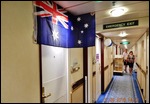


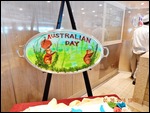


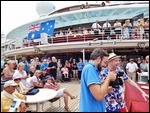
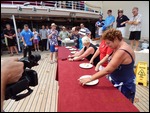

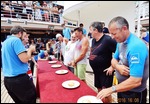







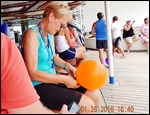
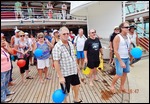

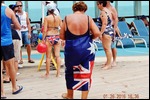
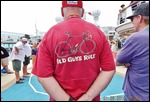





Ernst Rahm-Landis
2016-03-14
Dear Nelly and Jim, your Aussie, Aussie, Aussie-report is amusing and - in historical matters - very interesting an educational. I learnt quite a bit of the nations history and tradition. The USA have their 4th of July in summer, and the Aussies celebrate their National Day also in summer, means in "Down Under". - "Australia" in latin means: "Southern Terra". In each case the 97 percent of Australian passengers on board of "MS Sun Princess" had a good reason for a great and somehow wild party, and I assume that some alcohol was a part of it. After having read all your reports I came to the conclusion that Australia within a rather short time turned into a Grand Nation with a good outlook for the countrys future. So the "Sun, fun and nothing to do.."(except some nonsense and alcohol--abuse) is understandable, eventhough the former old Queen Victoria of England would have said: "We are not amused". - I had my pleasure, for sure together with all the readers of your blog. Greetings and cheers of your Swiss Cousin Ernst in Schaffhausen, Switzerland
petkatravels
2016-03-15
Even I learned about our Australia Day from your info! It is a "big" event here!
BUCZOLICH, MARY_WALLY
2016-03-15
Hi Jim and Nellie, once again you have demonstrated how skilled you are in producing such wonderful photos and commentary. Australia Day was very special to us all and to share this with our overseas travellers made it even more special. Thank you once again.
Regards Walter and Mary